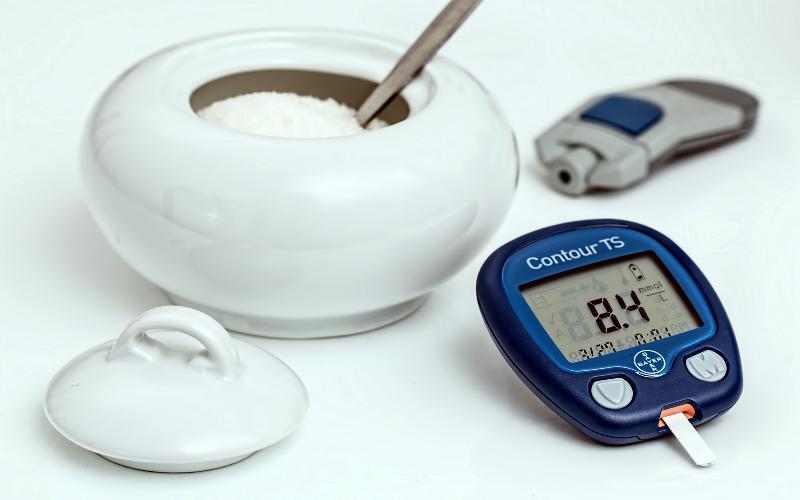Active Lifestyle Management of Prediabetes can Prevent or Delay Onset of Diabetes


Diabetes is a silent killer of human health and protecting ourselves from it is a task that can be best undertaken by foreseeing and detecting the glucose metabolism impairment before it reaches the levels of the full disease. This stage of Prediabetes is also an opportunity to delay the progression of disease and even revert it to a fully normal state, making its detection so precious.
According to the World Health Organization estimates, around 422 million people in the world suffered from Diabetes Mellitus in 2016, making it one of the most common chronic diseases affecting mankind. Diabetes is generally not reversed and needs to be controlled by a combination of lifestyle changes, prescription drugs and additional doses of insulin, the harmone that is naturally produced in body to control sugar metabolism.
The fact that Diabetes is not curable, makes it important that we find ways and means to prevent or at least delay its onset in the first place. This is where the glucose intolerance and Prediabetes assume immense importance.
Glucose metabolism in the body consists of converting sugar from food to fat and amino acids immediately after food intake and then its gradual conversion back to glucose, which is released into blood and circulated to reach all cells to give them energy. In a fully functional and unimpaired glucose tolerant body, this cycle is maintained in such a manner so as to keep the blood levels of glucose at a healthy level that do not harm the body in any way. This state is known as a state of normal glucose tolerance.
However, when this metabolic control is impaired the blood glucose levels begin to fluctuate and often cross the levels in a fully normal body. This is a state of abnormal glucose metabolism or a state of glucose intolerance.
When these levels reach particular levels on a consistent level that are out rightly dangerous for health and which are likely to lead to known health hazards, the condition is termed Diabetes Mellitus.
Prediabetes is a condition, where the glucose metabolism is impaired and the blood glucose levels are not within normal limits, but the abnormality and the rise in blood glucose levels have not yet reached the levels for it to be diagnosed as Diabetes Mellitus.
This can be considered as a connecting stage between a state of normal glucose metabolism and the fully blown state of Diabetes Mellitus.
Glucose intolerance is reflected by blood glucose levels. A fasting blood glucose level is taken after at least 8 hours of fasting, which reflects how the body in managing sugar metabolism in a fasting state. It is supplemented usually by a test taken two hours after food intake to test the competence of body to metabolize sugar digested from food.
The medical authorities consider following blood levels of sugar are diagnostic of normal, prediabetic and diabetic stages:
Normal Glucose Tolerance
Glucose Intolerance or Impaired Glucose Tolerance
Prediabetes
Diabetes Mellitus – requires at least two abnormal tests showing
The diagnosis of Diabetes Mellitus requires at least two abnormal tests taken at different times. Hence, if the test for a person fall in the diabetic range once only, and all subsequent tests are completely within normal range, he cannot be considered diabetic. Such a person must however be monitored for Diabetes by repeating blood glucose tests at regular intervals. In such cases, other tests like HbA1c text assumes greater significance.
Hemoglobin A1c test or the HbA1c test indicates the average blood sugar levels over a period of time, providing a more accurate indication of the long term blood sugar control. A level below 42mmol/mol (6 %) indicates normal glucose metabolism. A level of 48 mmol/mol (6.5%) or more indicates onset of Diabetes, while a level between 42 to 47 mmol/mol (6.0 to 6.5%) indicates Prediabetes.
Prediabetes is a stage that suggests a progressing abnormality of glucose metabolism that has not yet reached a level where it can be diagnosed as Diabetes Mellitus. The significance of detecting this state is that it provides an opportunity to slow down the progression of such impairment and even provides an opportunity to reverse the changes by addressing the contributory factors.
There is no single measure that can cure or reverse Prediabetes with a high degree of certainty, but medical experience shows that the following measures can help, although the impact of each measure may be different from individual to individual.
The impact of these measures is not uniform in all individuals since different factors contribute to the diabetic progression differently in different individuals.
Given the very high levels of prevalence of Diabetes and Prediabetes, even those who do not have any impairment in blood sugar metabolism currently should get their status monitored every two to three years at least.
For those having Prediabetes, it is advisable to have their status monitoring on a frequent basis depending upon their blood sugar levels, as advised by the physician. In any case, they must get it checked at least once in a year.
Pine nuts have high nutritional value, have unique taste and are good source of energy. This article offers a detailed perspective on amazing health benefits of pine nuts and its nutritional value.
There are numerous benefits of ginger tea for health. In previous article we have learnt about the various recipes to make ginger tea for weight loss.
If you love to eat fruits then getting beautiful and glowing skin would be easy for you. Beautiful skin can be achieved by eating some of your favorite fruits.